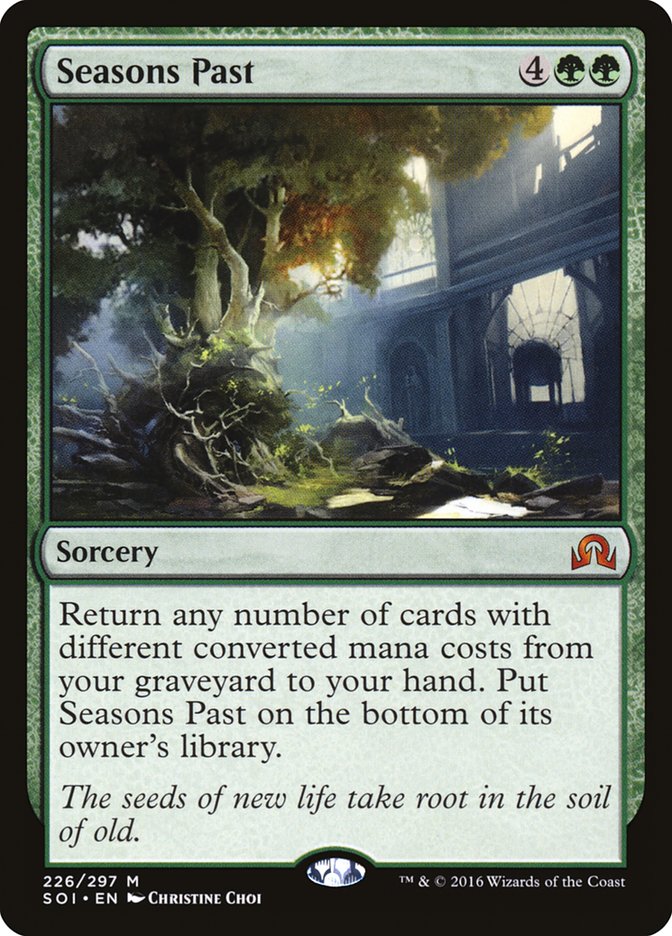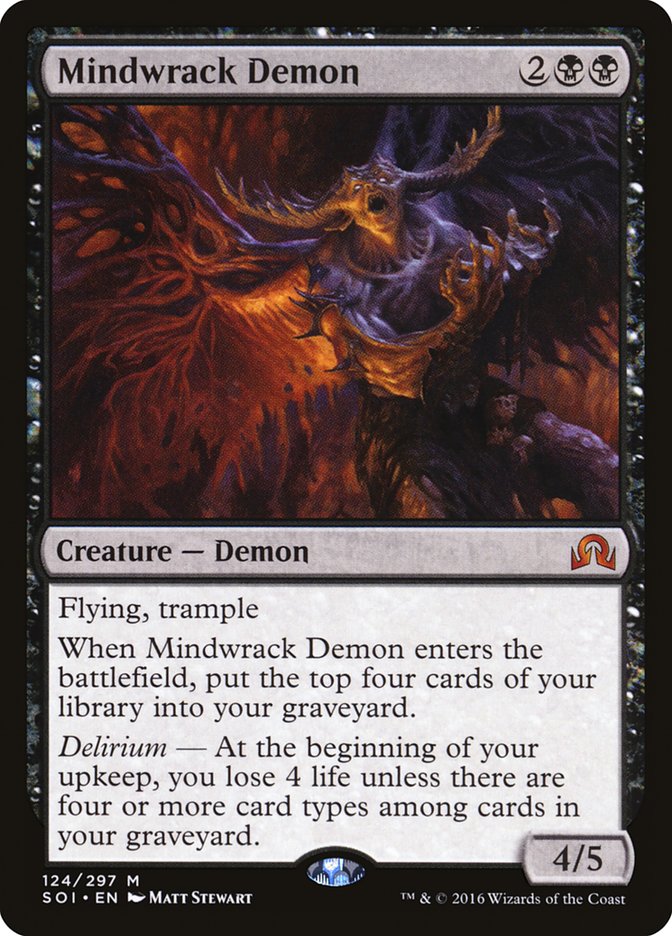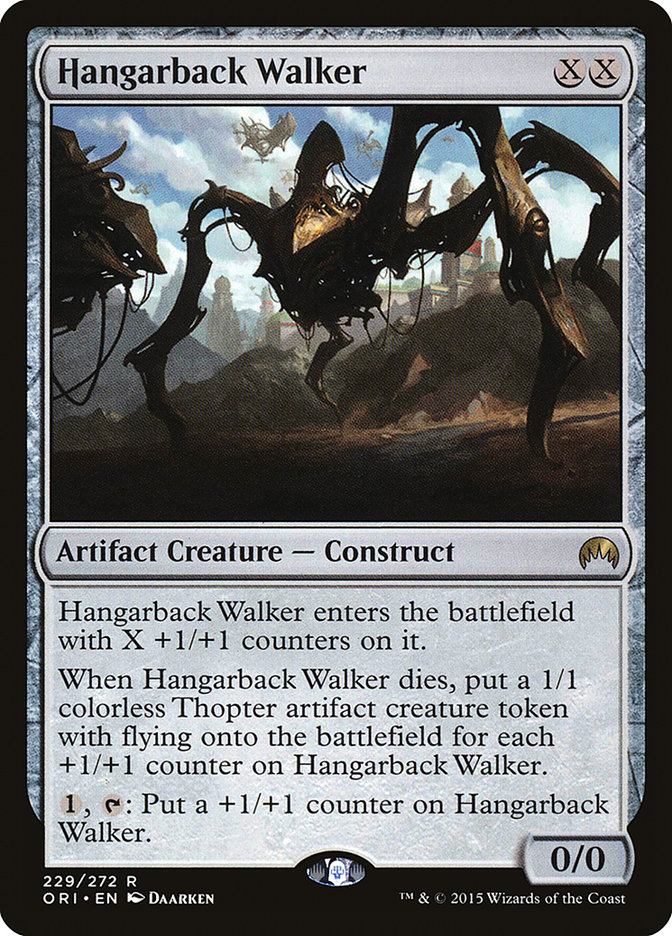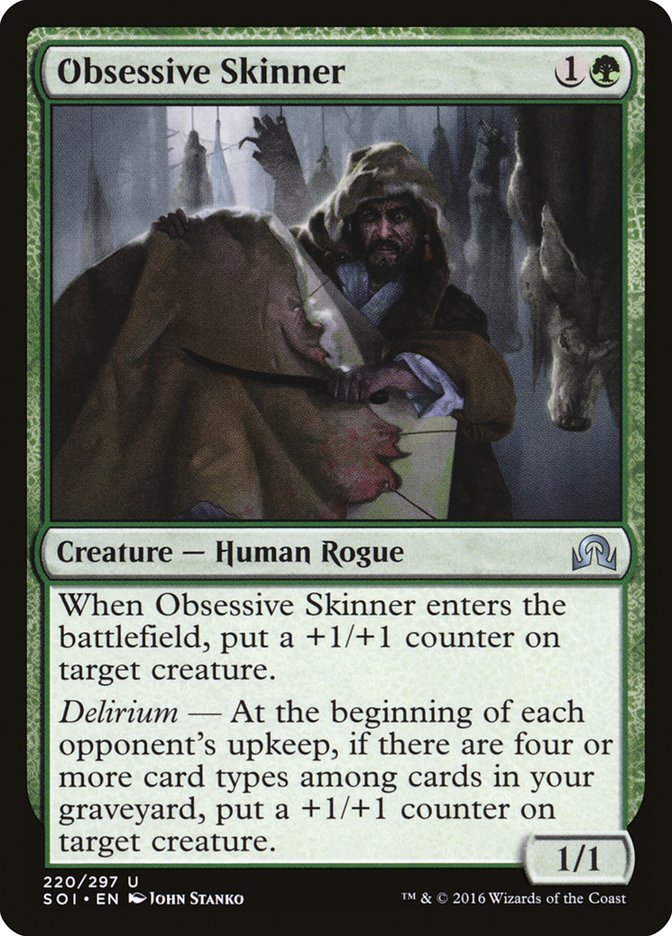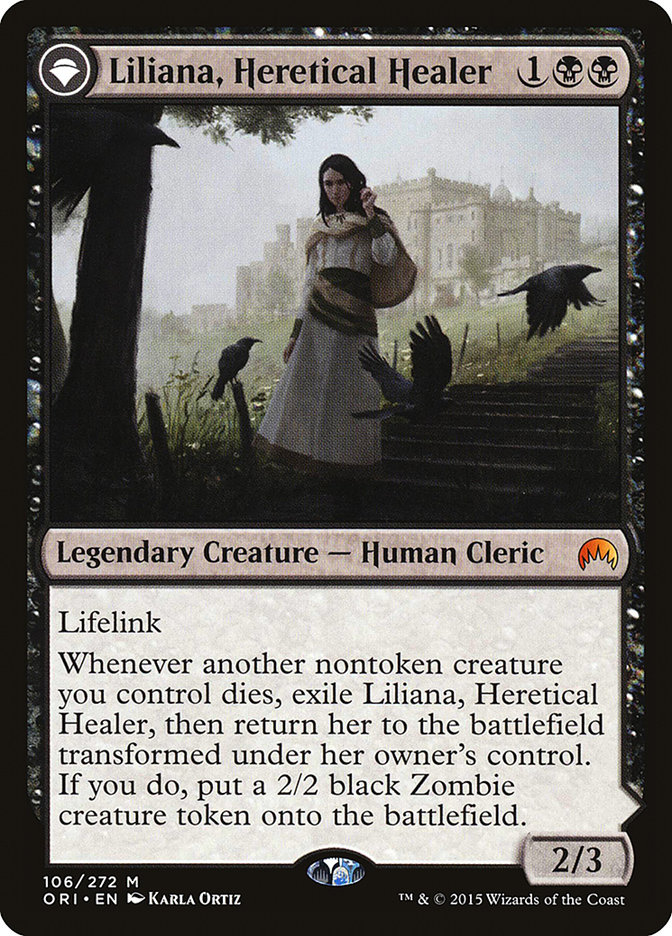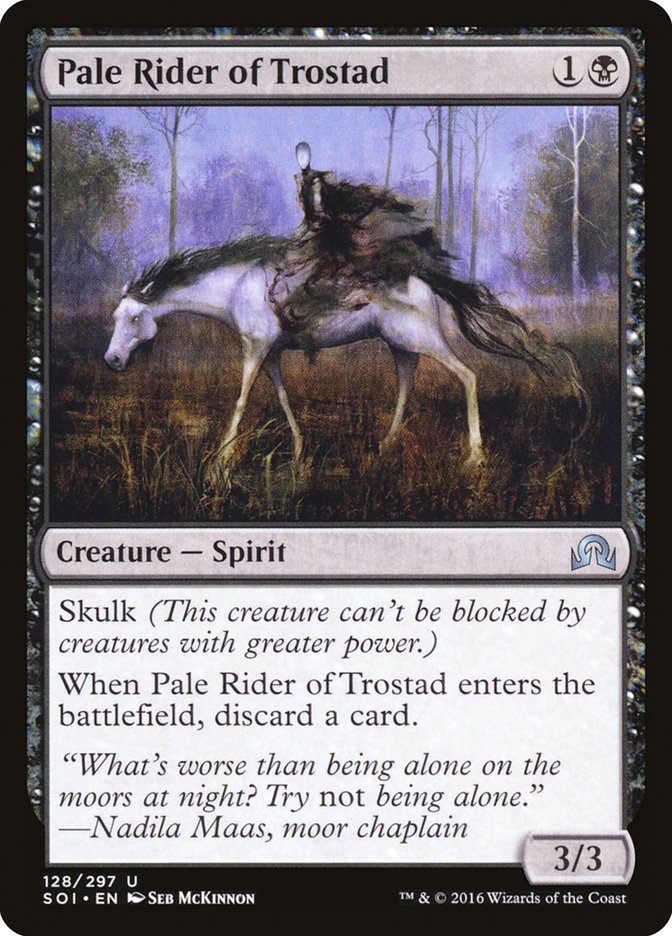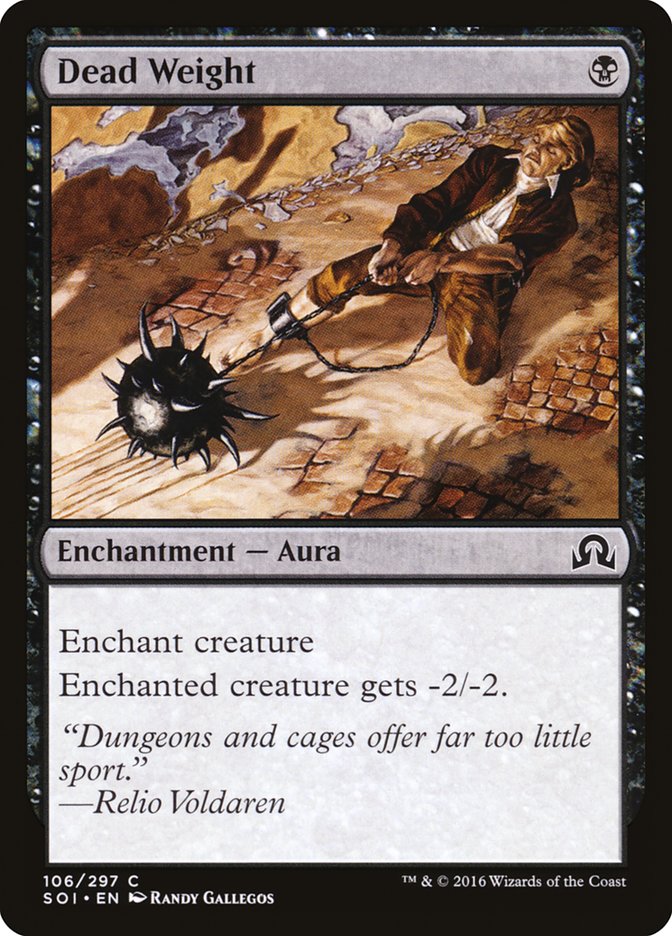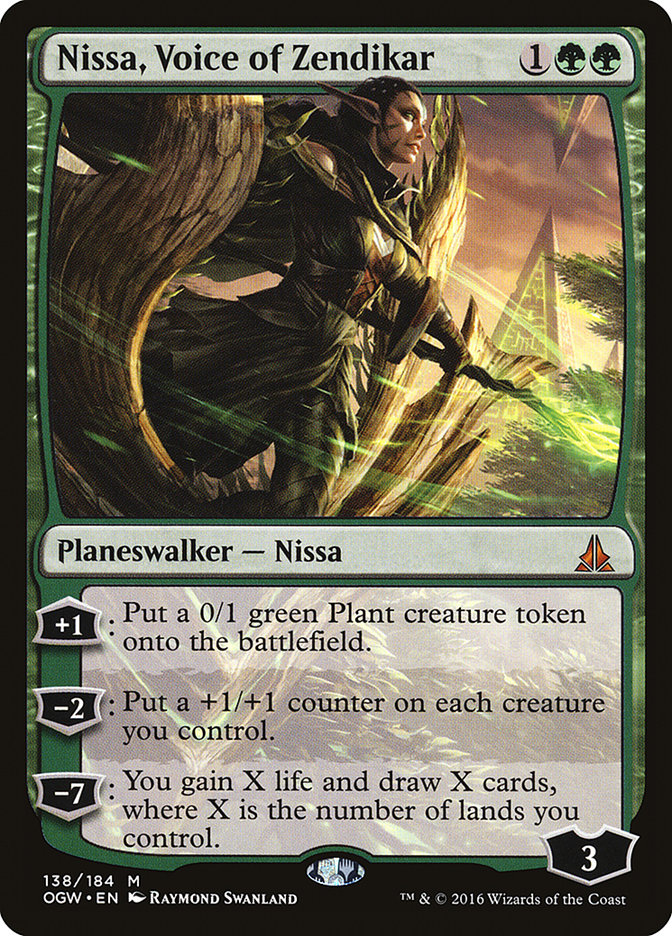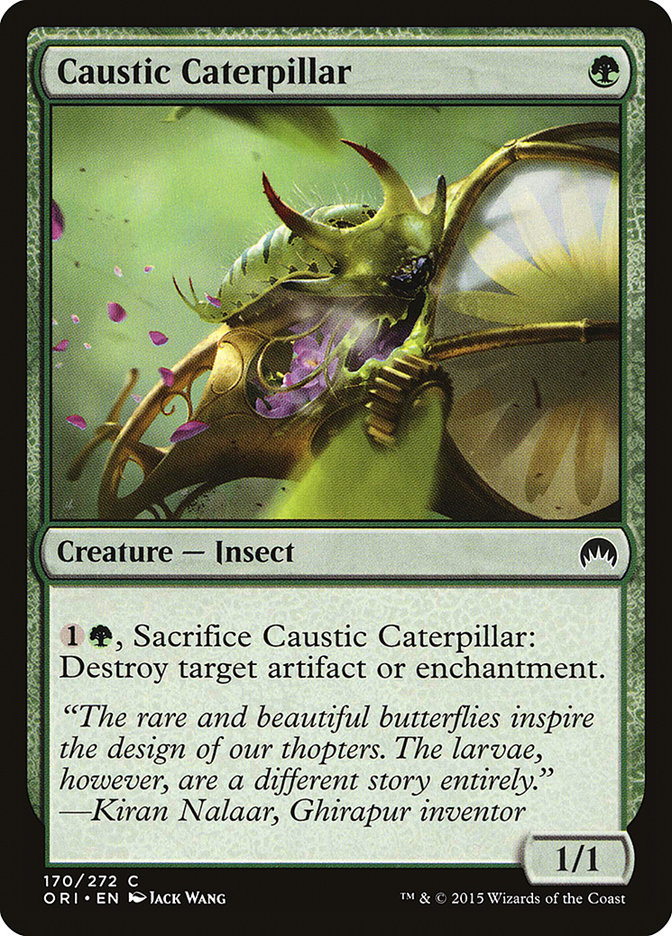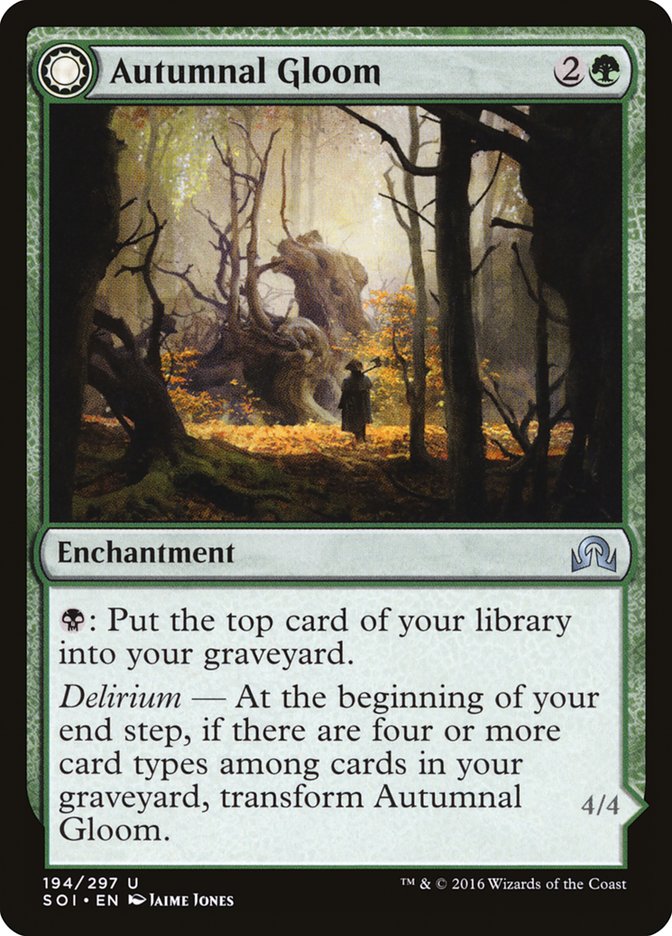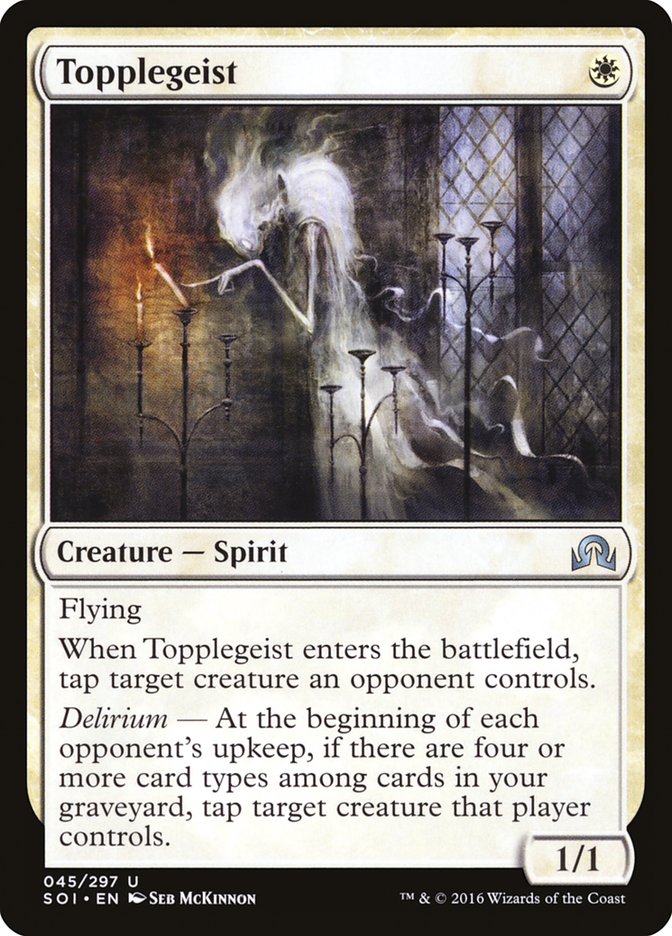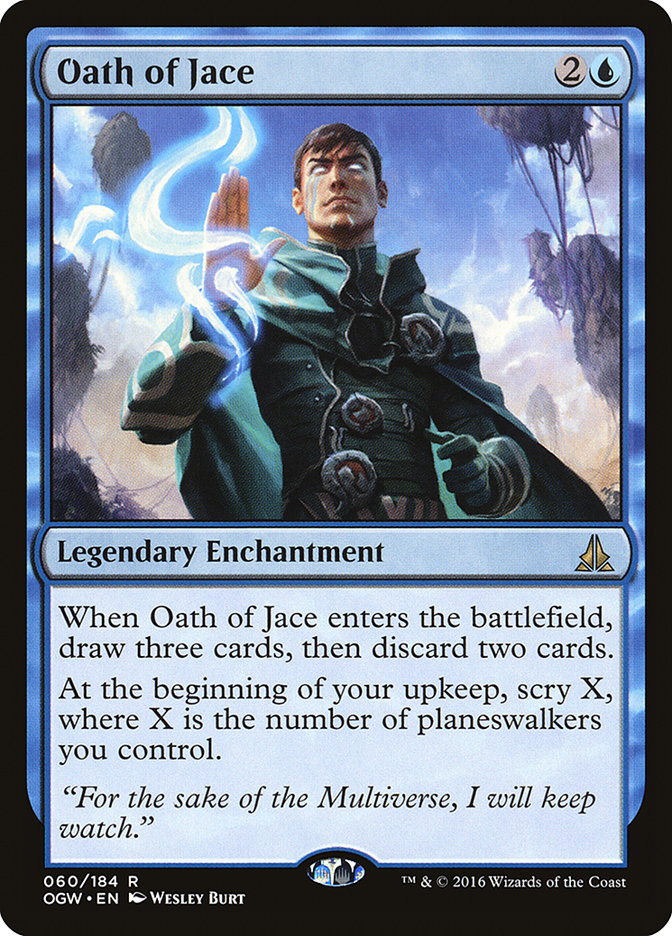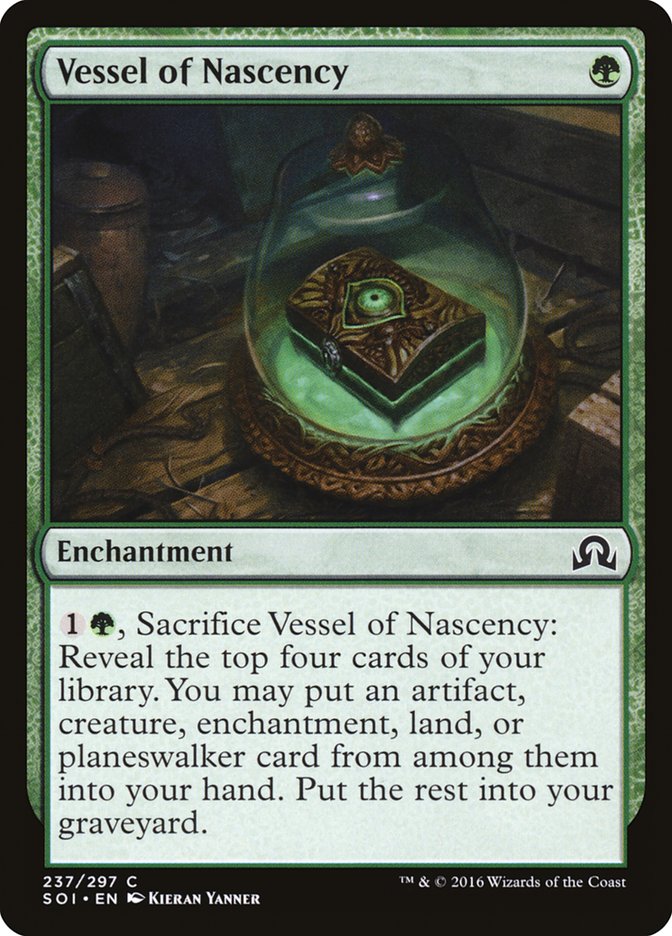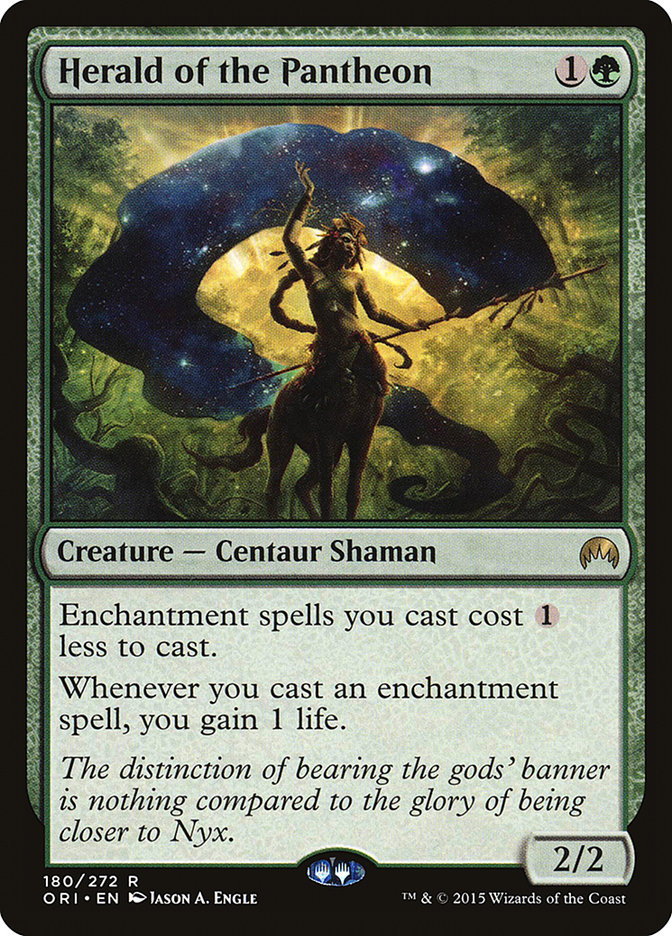Cards like Seasons Past, a card I thought was amazingly strong but had no idea where the shell was for it, surprised me and the majority of the community as we watched it in action. Known quantities like Bant Company and G/W Tokens did superbly as well, but Brad Nelson got in there with a cool ramp version of Pyromancer’s Goggles alongside Luis Salvatto’s Eldrazi-based list. Everyone at my shop wants to play Luis Scott-Vargas’s Cryptolith Rite list. Control even had a good showing, with Esper colors putting up the best combination of removal, fixing, and Dragons.
Yes, that’s each deck from Pro Tour Shadows over Innistrad’s Top 8. While they’re all great and deserve a look across the board, I included them all because, well, I like counting things. You could say that I’m delirious about counting.
The delirium keyword, new to Shadows over Innistrad, combines my childlike obsession with counting and my enjoyment of structuralism in Magic. While I’m a relaxed guy in the majority of my life, when I play Magic, I like things to be well organized into neat piles. I have a carefully kept binder of each Standard-legal set, organized by collector number complete with proxies of every card to hold their place if I haven’t gotten them yet.
When a card cares about a card type, I’m there thinking of all the potential cards fit within that type and the format. I like casting Enchanted Evening and being able to target all of my opponent’s permanents with Erase. I enjoy attaching Ensoul Artifact to Darksteel Citadel because it’s an artifact. I like that Green Sun’s Zenith for zero can target Dryad Arbor. I like when card type and creature type matter. Delirium touches on that structural part of Magic in a way I really enjoy, combining it with something else I really like in Magic: graveyard interaction.
When the first delirium cards of the set were spoiled, I started brewing immediately. I was in love with the mechanic. I loved that having multiple card types mattered, and it made your actions take this into account. I loved that they were across every color and that there were tons of interactions in Standard that made delirium better. I was so excited about delirium that I even made a counter to track a player’s delirium level.
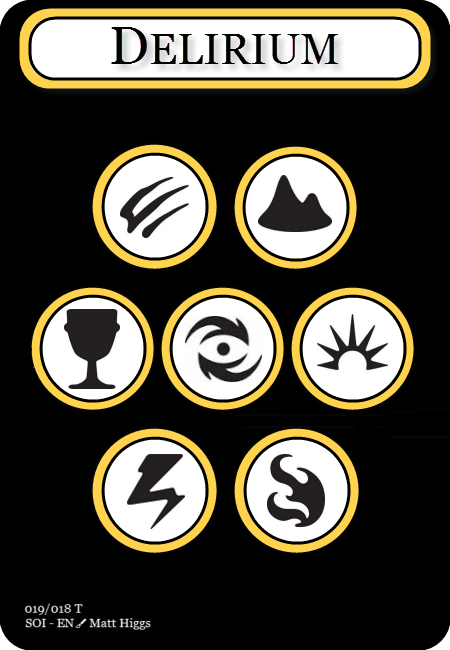
That symbol in the middle is one of the original symbols considered for “planeswalkers” while Future Sight was being developed.
“Okay, so we get it, you’re pumped about delirium.” Hold on just a second, anxious reader. We’ll get to those decklists!
While there are 27 cards in Shadows over Innistrad that contain the keyword, the most important delirium card was released almost a year ago.
Hangarback Walker has been a ubiquitous force in Standard since it was released last summer, requiring special handling in combat and through the use of removal. It’s been featured in this column more than I can count, but it still continues to be one of the most abstractly powerful cards in the format.
Here, though, its most critical features are in the middle of the card and the bottom right: it’s an artifact creature and it has zero toughness. If you draw a Hangarback Walker in a delirium deck, you can immediately cast it with X as zero, when it will immediately die and put two card types in your graveyard.
Since Theros block rotated, artifact creatures are the only cards in Standard that have two types in the graveyard, and the Hangarback Walker can be instantly placed there. If your deck doesn’t just utilize delirium, but relies on it, I’d highly recommend playing the Walker to fulfill half your delirium requirements on one card.
You’ll see a lot of the Hangarback Walker today, but you’ll also see a lot else. Delirium is represented in every color and archetype, so I’ve got two decks for you today, each made with love and care (and testing) to make sure that you’ll be delirious while you play them, too. If that’s not enough, I’ll be bringing you three more delirium decks next week!
Deck #1: Black and Green
A quick search through Shadows over Innistrad reveals that over half of the cards that have delirium lie in black and green. This makes sense; in recent years, black and green together have epitomized the loam-dredging, life and death dichotomy of various guilds and archetypes. There are a lot of directions you can go with these colors, but first, let’s get aggressive.
Shadows over Innistrad brought us a cycle of delirium-matters uncommon creatures, and the green one is one of the better of the lot. Obsessive Skinner helps break stalemates, pumping up other creatures right away, or it can be a Grizzly Bears if you need a Grizzly Bears. With early delirium, you’ll be adding a power to the battlefield at no additional expense every single turn.
With Obsessive Skinner, every card that cares about +1/+1 counters gets better, including our delirium all-star Hangarback Walker. Avatar of the Resolute is incredibly efficient with even just one +1/+1 counter on your side, and it blocks the format’s Thopters, Angels, and Dragons like a pro, often bringing them down with it at a fraction of the cost.
That’s good enough to start with. Get out your shovels, folks!
Creatures (22)
- 4 Avatar of the Resolute
- 2 Liliana, Heretical Healer
- 4 Hangarback Walker
- 4 Endless One
- 4 Obsessive Skinner
- 4 Pale Rider of Trostad
Planeswalkers (2)
Lands (18)
Spells (16)

This seemed the most direct path for delirium: fill up the graveyard through self-discard, cheap spells, and undercosted threats that care about the graveyard after it’s been filled. Here are a couple of highlights.
A staple of the previous format’s Rally the Ancestors decks, Liliana has seen a recent resurgence in decks like LSV’s list mentioned above, and here she can be activated immediately, thanks to eight creatures that can be played for zero mana and die right away. One she’s flipped, her –X ability can recover every creature in the deck, pre- or post-sideboard, many of which she can do immediately, paying you back for the Endless One or Hangarback Walker you pitched to flip her.
The Pale Rider is way more powerful than its cost would have you believe, and because this deck is so anxious to get cards out of its hand, there will either be times where this helps delirium or it comes in as a 3/3 for two mana because you’ve already become hellbent. Compare it to Drekavac, a card I loved playing a decade ago that required a discard and had no evasion.
Man, I love this spell.
Dead Weight is blisteringly efficient, it counts as an enchantment for delirium, and it defeats or invalidates the majority of the creatures out of the Humans and Bant Company decks.
Okay, so let’s talk about this sorcery for a second.
This deck plays eighteen lands, and you’ll notice that the land count of these decks is lower than normal. Traverse the Ulvenwald is far more than Lay of the Land, Safewright Quest, or any other card like it that’s come before. This gets better as time goes on, and it can do that a surprisingly fast pace in decks with the sole focus of achieving delirium.
This deck without Traverse is probably a twenty-land deck. Most of the spells are cheap, there are not a lot of mana sinks if I flood, and I can produce an early, strong battlefield presence in case I come up short on the land count. With Traverse, you can shave deep, finding the best creature or land with just a couple turns, giving you far more control over your deck. I tested this list a lot and eventually cut down to eighteen lands, which continuously felt correct to me. It needs two lands to function and three to flourish, neither of which is hard with a reasonable keep.
This Nissa counts towards delirium if she gets milled, but if you can actually cast her she gets awesome really fast. Her -2 is her most powerful ability, but she can make an army of Plants to protect herself or a flipped Liliana all day, too. With all the +1/+1 counter synergies, including her great sizing and cost, she’s one of the best cards in the deck.
There a couple of bullets in the sideboard that I love. Caustic Caterpillar works great with either side of Liliana, providing on-demand sacrifice to flip her; she can also bring the Insect back three times on a fresh flip if they have a bevy of enchantments to invalidate. Tooth Collector is a great one against an aggressive deck, providing oppressive advantage either in killing a creature or token outright or making it to anemic to effectively attack, all while resting on a reasonable 3/2 body for three. Duress is cheap, getting into the graveyard for one mana while dealing with your opponent’s clutch removal spell to deal with your turn 2 Hangarback Walker.
In practice, this deck was lightning fast, but its limited resources required a significant amount of sequencing practice to get right. There were a lot of times in testing where I’d take back moves after I realized I’d tapped wrongly or I’d discarded the wrong card to do what I needed to. I love those levels of complexities, but there’s definitely a curve. It could overrun Humans and Bant Company, but it struggled against decks with large creatures, like Ramp and midrange strategies. Some harder removal might help, but the shell is absolutely there.
Deck #2: Autumnal Gloom
One card that seems like a shoe-in for B/G delirium was passed over. Until now!
This is one of the best threats that delirium rewards. The sizing is strong right now, and the fact this can’t be targeted is increasingly important with how easily Bounding Krasis and Reflector Mage can impact the battlefield. The trample is awesome, too.
The best part about the deck that plays Autumnal Gloom is it doesn’t get trapped in black. If the delirium’s good enough, you’ll never need it.
Here’s another diamond in the rough. This one-drop has a lot of innate power, and the ability to remove a creature from combat is its crowning glory. Plus, it’s evasive!
Enabling delirium usually involves dumping a lot of cards in your graveyard, and the Oath is a great way to do that. Vessel of Nascency was in the last deck, but the synergy is a bit stronger here.
This seems like a lot of enchantments. Maybe that’s the subtheme?
We can make this work.
Creatures (14)
Planeswalkers (6)
Lands (18)
Spells (22)

The big additions are the planeswalkers, which not only up the delirium count for that card type but they also provide a lot of utility for the long game. I like Gideon, Ally of Zendikar’s emblem, which can make my Topplegeists and Thopters much more intimidating, as well as bring my Ancient of the Equinox out of Languish range. Kiora, Master of the Depths is a great delirium enabler with her -2; frankly, she didn’t always hit one of each in both games, but she can turn on delirium right away after your turn 3 Autumnal Gloom.
Starfield of Nyx belongs in most enchantment decks, but that’s even truer when I’m putting a lot of enchantments in my graveyard. Rebuying Oath of Jace every turn (assuming you have one on the battlefield and another in the graveyard) is pretty exciting, too. Invocation of Saint Traft is nearly impossible to stop on an Ancient of the Equinox, and it’s also a pretty slick play on any other creature if you curve into it.
This deck also has eighteen lands, and this was a conscious decision to cut down, thanks to cards like Oath of Jace, Vessel of Nascency, and the aforementioned Traverse the Ulvenwald. Despite being three colors and sporting spells that cost four and five mana, I’ve yet to have considerable problems in testing.
This one is actually a bit easier to play than the first list, but perhaps not nearly as explosive. It is steady, though, and Topplegeist and early Autumnal Glooms vastly overperformed. The deck struggled with its colors a bit, but not the actual presence or absence of mana, so the manabase presented here reflects some tweaks to help. This one is exhilarating, offering some free-win games where they can’t target or effectively block a turn 3 Ancient of the Equinox while you attack and deal with their other stuff through blocks, removal, planeswalkers, or lifegain.
When this deck loses, it loses to itself with either an incongruent draw or rough mana timing. If it’s not losing to itself, I’ve found it’s too fast for control to stop, too evasive for midrange to interact with, and too wide for aggro to get through. All in all, this list and the previous one were a blast to play, and I don’t think it’s just because I’m delirious about delirium, I just actually think they’re sweet decks.
For the rest of you who love delirium, we’ll jump right in with three more lists next week that push the delirium plan in all new colors and strategies. I just couldn’t squeeze them all in. Hopefully these decks can help get us thinking about the mechanic, our graveyards, and the way they work together in a meaningful way.
With this first half of delirium enablers, how are you working them in to the decks you’ve already built, or have you gone deep into delirium in ways we’d never considered?


